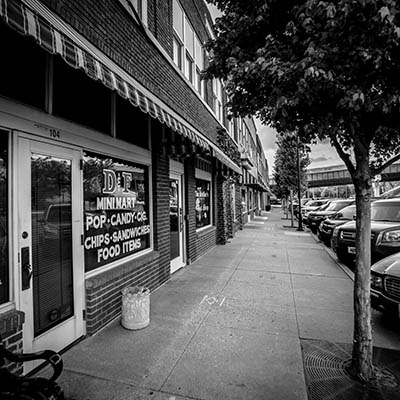Right of passage
A local hip-hop group wanted to host a free memorial for victims of the 1921 Tulsa Race Riot. Its members found out that was harder—and more hurtful—than they knew.
(page 2 of 3)
 Hahn grew up in Verdigris, a stoplight on Route 66 between Catoosa and Claremore. He has always checked the box next to “white” on work, school, and license applications.
Hahn grew up in Verdigris, a stoplight on Route 66 between Catoosa and Claremore. He has always checked the box next to “white” on work, school, and license applications.
Enamored with hip-hop from an early age, he was rapping by the time he was in college, and he helped form Oilhouse after graduation. Though clued into history and race through music and company-kept, like many Oklahomans, Hahn was clueless about what happened in Tulsa on May 31st, 1921. Practically in his backyard, 35 blocks of businesses and residences, including historic Greenwood and Black Wall Street, were destroyed in a matter of hours in what has been called the worst civil disturbance in American history, a riot, a massacre, a genocide.
Well after he had left the classroom as a student and returned as a teacher, Hahn was at a party on North Main in downtown Tulsa. There he met a party-goer who claimed the area all around them was haunted, and that hundreds of people were murdered nearby. He wrote the exchange off as urban legend, but later that week, Hahn learned it pointed to the truth. He quickly found and read a copy of “Death in a Promised Land: The Tulsa Race Riot of 1921,” the 1992 book by Scott Ellsworth, then, distraught, every other Riot-related book he could put his hands on. Hahn began to incorporate what he learned into his high-school classroom. In his students’ final this year, he required them to enter the community and engage a stranger about the tragedy.
That’s what he wanted to do at Guthrie Green, the crown jewel of the bustling Brady Arts District, with “1921.” Hahn hoped to leverage Guthrie Green’s offer of its stage and give a deferred conversation its due. Oilhouse reached out to other artists, to Delacroix, Written Quincey, Lojo Werkz, Clean Hands Army, and This Land Press to join the cause. The group moved forward, completely confident that Tulsans would think it was a good thing. However, there was more to the conversation than they knew.
Some Greenwood advocates expressed their unhappiness: That Oilhouse was, with this showcase, exploiting the tragedy of 1921. That the group and its sponsors were trying to look good for Oprah Winfrey’s producers, in pre-production on a mini-series, said to be titled “Tulsa” and based on the massacre in Greenwood. They accused him of stealing—this was a memorial for the victims of the Riot and it belonged in Greenwood, not in a neighborhood that, even after last year’s protests and pleadings for change, still bears the controversial name Brady. At the very least, Greenwood leaders deserved a place at the table to take part in planning such an event, some said.
Tulsa’s Brady Arts District drew national media attention last year when a group fought to rename its thoroughfare. Brady Street is the namesake of W.T. Brady, reported in a 2011 story in This Land to be a member of the Ku Klux Klan and an alleged participant in the 1921 Tulsa Race Riot. After several weeks of heated debate, the City Council agreed to amend the name. The letters M.B. were added to signify the Civil War photographer, with no apparent ties to Tulsa, rather than the Klansman. Alfred Brophy, author of “Reconstructing the Dreamland: The Tulsa Riot of 1921, Race, Reparations, Reconciliation,” who has written before about the renaming of Civil War monuments and the threat of such changes to historical memory, called the move “intellectually dishonest.” The signs now say M.B. Brady Street and stretch through downtown marked also as Reconciliation Way. But according to the Brady Arts District website as of this writing, the district’s name is still “derived from Wyatt Tate Brady.”


.jpg)
.jpg)
